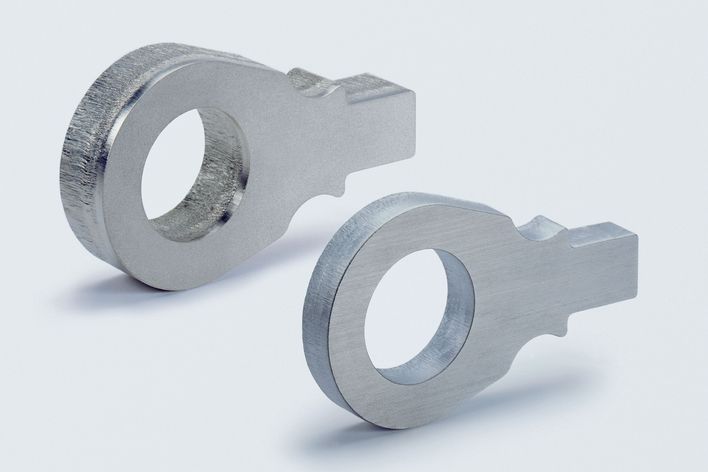Nitrogen or argon is used as the cutting gas here. The gas is blown through the kerf at pressures ranging from 2 to 20 bar. Argon and nitrogen are inert gases.
This means that they do not react with the molten metal in the kerf. They simply blow it out toward the bottom. Simultaneously, they shield the cut edge from the air.
The great advantage of fusion cutting: cut edges are oxide free and do not require further treatment. Nevertheless, the laser beam must supply all of the energy needed for cutting. For this reason, cutting speeds as high as those in flame cutting can be achieved only in thin sheets.
Piercing is also more difficult. Some cutting systems allow you to use oxygen to pierce the material and then switch over to nitrogen for cutting.

